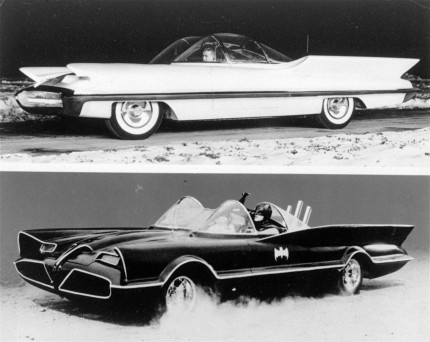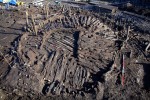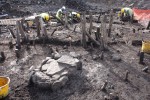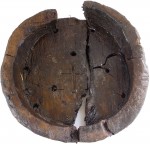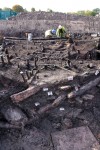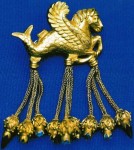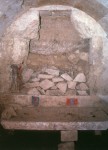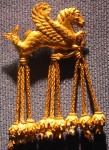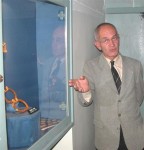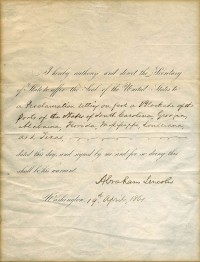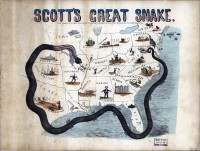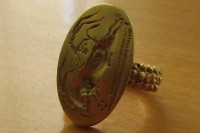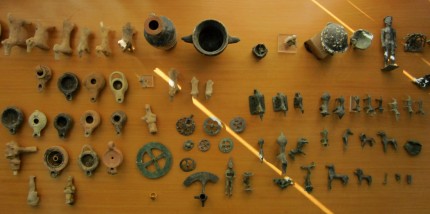 The first and some would say greatest of all Batmobiles, the one that started it all, is going on sale for the first time at the Barrett-Jackson auction in Scottsdale, Arizona, on January 19th, 2013. This is the iconic Batmobile made by legendary car customizer George Barris for the 1966 Batman television series starring Adam West in the title role. It still has all the Batgadgets even the most covetous and demanding of comic nerds could wish for and a pre-Bat history that the most covetous and demanding of car nerds could only dream of.
The first and some would say greatest of all Batmobiles, the one that started it all, is going on sale for the first time at the Barrett-Jackson auction in Scottsdale, Arizona, on January 19th, 2013. This is the iconic Batmobile made by legendary car customizer George Barris for the 1966 Batman television series starring Adam West in the title role. It still has all the Batgadgets even the most covetous and demanding of comic nerds could wish for and a pre-Bat history that the most covetous and demanding of car nerds could only dream of.
It started its life in 1955, a one-off Lincoln Futura concept car. Designed by Ford’s lead stylist Bill Schmidt who was inspired by manta rays and mako sharks he had seen while scuba diving, the Futura’s body was built entirely at the Ghia Body Works in Turin, Italy, in 1954 and affixed to an experimental Lincoln Mark II chassis made three years before the first Mark IIs were sold. The car was 19 feet long, seven feet wide, and just 4.4 feet high with a double, clear-plastic bubble top, huge outward-angled tailfins on the back and front sides, a wide oval grill to give it that shark-mouth aggressive look and all kinds of newfangled technology like push-button transmission, warning lights and speedometer (among other indicators) housed in the steering wheel, and a circular rear antenna that also served as a microphone to pick up and amplify traffic or horn sounds from any car behind them to the driver and passenger inside the bubble canopy.
4.4 feet high with a double, clear-plastic bubble top, huge outward-angled tailfins on the back and front sides, a wide oval grill to give it that shark-mouth aggressive look and all kinds of newfangled technology like push-button transmission, warning lights and speedometer (among other indicators) housed in the steering wheel, and a circular rear antenna that also served as a microphone to pick up and amplify traffic or horn sounds from any car behind them to the driver and passenger inside the bubble canopy.
 This was Ford’s car of the future, a repository of all the Jetsons-like technology that could be crammed into 19 feet of vehicle. Even its paint job was cutting edge, a Pearlescent Frost-Blue white which was one of the first pearlescent car treatments. The effect was created by grinding up actual pearls and adding them to the paint. It was intended for display on the auto show circuit, but unlike many show cars, this one was made to work. It was drivable from day one. The total production cost for the Lincoln Futura was $250,000.
This was Ford’s car of the future, a repository of all the Jetsons-like technology that could be crammed into 19 feet of vehicle. Even its paint job was cutting edge, a Pearlescent Frost-Blue white which was one of the first pearlescent car treatments. The effect was created by grinding up actual pearls and adding them to the paint. It was intended for display on the auto show circuit, but unlike many show cars, this one was made to work. It was drivable from day one. The total production cost for the Lincoln Futura was $250,000.
The Futura made its debut at the Chicago Auto Show of January 8th, 1955. It ran the show circuit for the next few years and became immensely popular, so much so that Ford made model and toy car versions for the mass market. In 1959, the Futura had its first brush with show business, snagging a featured role in It Started with a Kiss, and upstaging human stars Glenn Ford and Debbie Reynolds. Since pearl white didn’t photograph with the drama the filmmakers were looking for, the car was painted red. See the Futura steal the show in this collection of clips from the movie:
[youtube=http://www.youtube.com/watch?v=RHMLqe5y7Ag&w=430]
With the dawn of a new decade, the Futura’s days as a star of stage and screen seemed over. Its tailfin-and-bubble look was at odds with the more streamlined aesthetics of the 60s. Ford sold the car to George Barris, who worked for the company’s Ford Custom Car Caravan for six years in the early and mid-60s, for $1. (This token price wasn’t a particular slur on the illustrious Futura, mind you. Ford and Barris had done this before. Concept cars would be retired and sold to Barris for a nominal sum so he could use them in movies and television. Ah, the days before product placement…)
 The car sat in Barris’ lot for a few years doing nothing when in late 1965, destiny came calling. Batman producer William Dozier called needing a Batmobile. He gave Barris 15 days and $15,000 to build it and so he did. The Futura’s two-seater design and unique 50s futurist winged look made it the perfect car to customize into Batman and Robin’s main ride. A few metal modifications, engine boosts, racing wheels exposed by opened wheel wells, Batgadget attachments and a gloss black paint job with glow-orange red trim later, history burst out of the Batcave.
The car sat in Barris’ lot for a few years doing nothing when in late 1965, destiny came calling. Batman producer William Dozier called needing a Batmobile. He gave Barris 15 days and $15,000 to build it and so he did. The Futura’s two-seater design and unique 50s futurist winged look made it the perfect car to customize into Batman and Robin’s main ride. A few metal modifications, engine boosts, racing wheels exposed by opened wheel wells, Batgadget attachments and a gloss black paint job with glow-orange red trim later, history burst out of the Batcave.
[youtube=http://www.youtube.com/watch?v=sBe3QzVW5_8&w=430]
Although many Batmobiles have followed in the wake of its turbine flame, the original still holds the pole position in fans’ hearts. Not just because of its fantastic good looks, either. It won a race against the 1989 Tim Burton Batmobile (the race starts at 8:00 in this video) so its badassery has more than stood the test of time.
After years on the convention circuit, in special appearances and on display in museums, the Batmobile is still in pristine shape. It is being sold by George Barris himself who has been the sole owner since it was decommissioned by Ford. Whoever is fortunate enough to buy it in January is going to spend a lot more than the dollar it cost the only other time it was sold.
The car features a 390-in 1956 Lincoln V-8 engine and a B&M Hydro Automatic transmission. Gadgets include a nose-mounted aluminum Cable Cutter Blade, Bat Ray Projector, Anti-Theft Device, Detect-a-scope, Batscope, Bat Eye Switch, Antenna Activator, Police Band Cut-In Switch, Automatic Tire Inflation Device, Remote Batcomputer, the Batphone, Emergency Bat Turn Lever, Anti-Fire Activator, Bat Smoke, Bat Photoscope, and many other Bat gadgets. If needed, the Batmobile was capable of a quick 180° “bat-turn” thanks to two rear-mounted ten-foot Deist parachutes.
I would slap a baby just to get a ride in this car. I don’t even want to consider what I’d do to own it.
